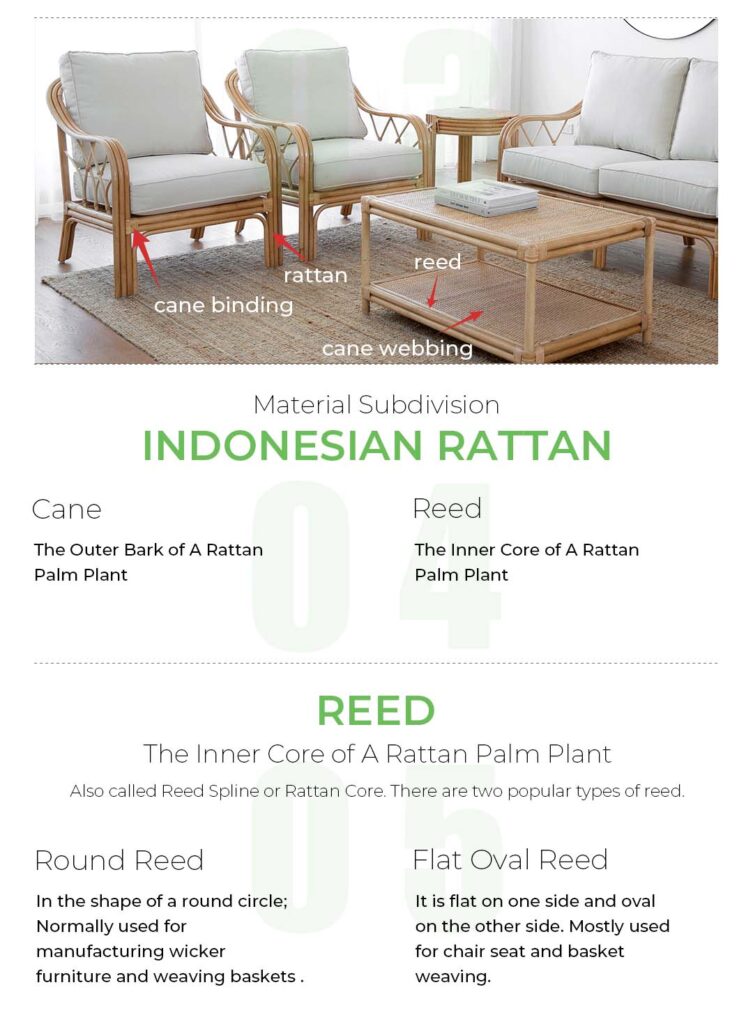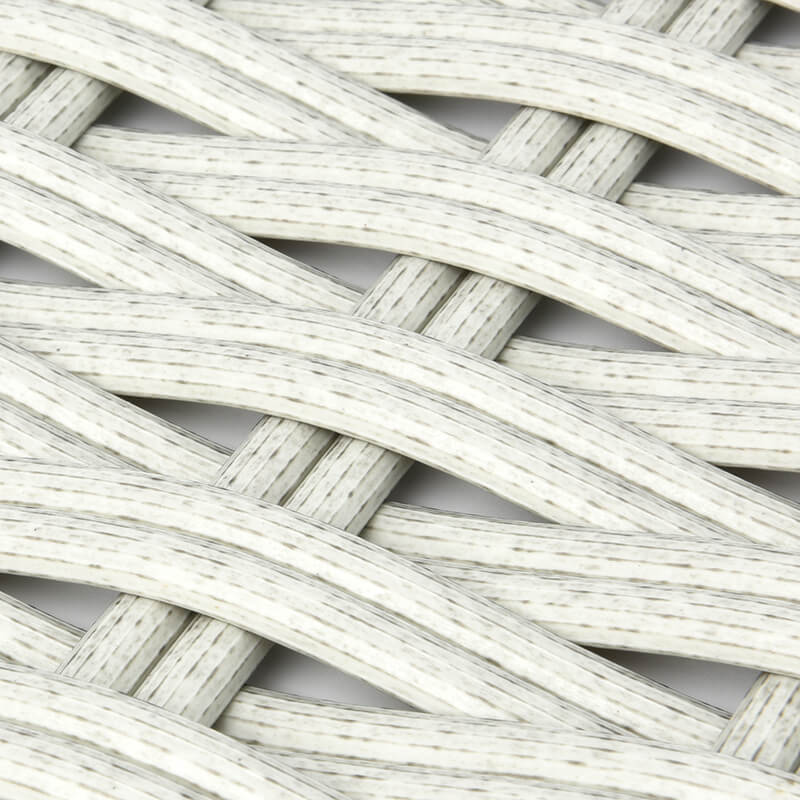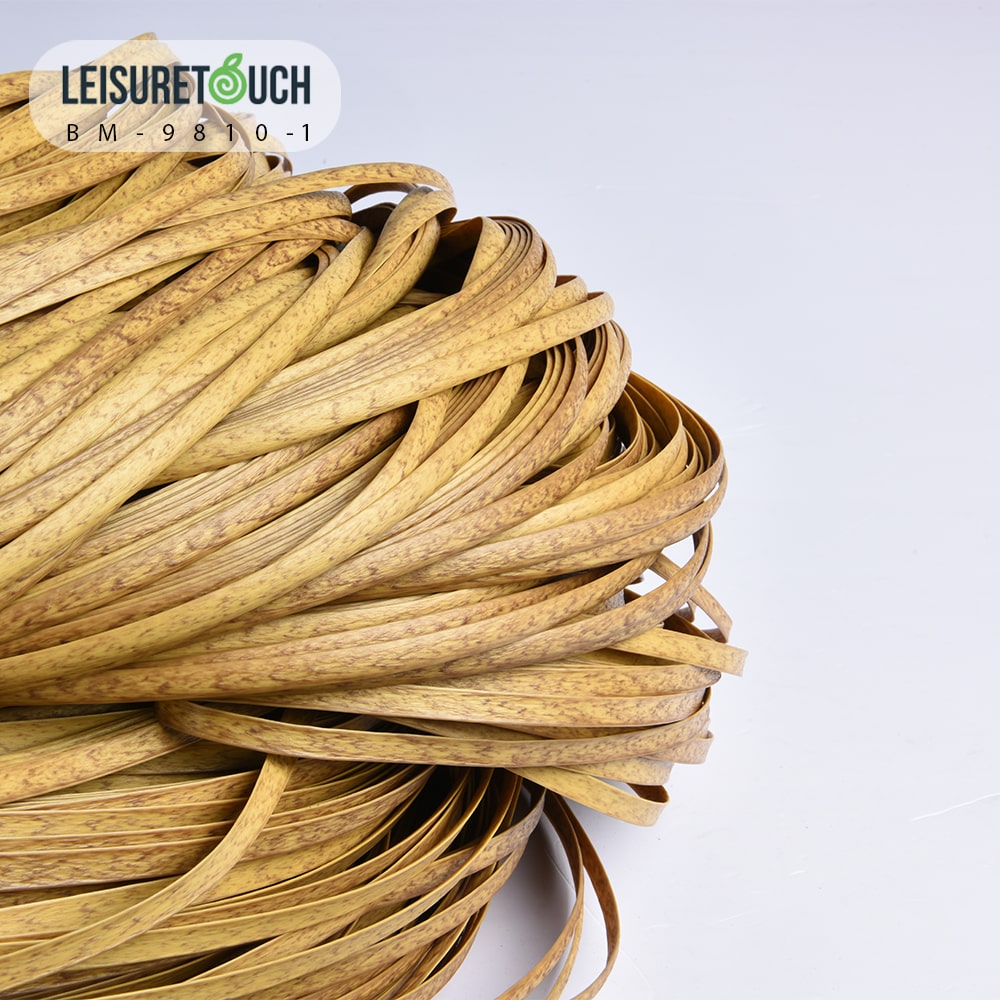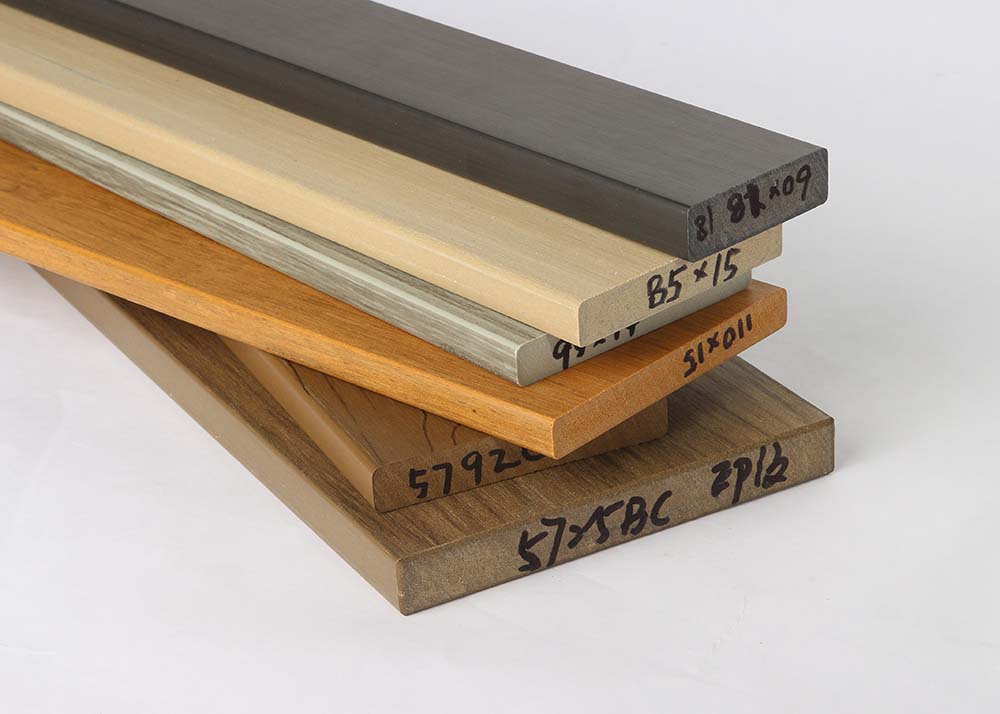Introduction
When you are browsing natural or synthetic rattan material online for your indoor or outdoor furniture making, will you feel confused about the diverse terms that are used to describe rattan material? Here, I will provide you with a brief introduction to help you clarify them. In recent years, because of the market trend and people’s desire for sustainability, durability, and a touch of nature in living spaces, there has been a resurgence of interest in rattan materials in the world of furniture design.
When talking about rattan materials, synthetic rattan has emerged as a popular choice to substitute the traditional real rattan. With its versatility and resilience, synthetic rattan not only imitates the natural look of real rattan but is also durable and sturdy enough to live in any space.

However, no matter whether you are looking for natural or synthetic rattan material, the terms ‘cane,’ ‘reed,’ ‘rattan,’ and ‘wicker’ are often used interchangeably by lots of rattan material or rattan furniture suppliers, leading to confusion about their specific characteristics and uses.
After reading this blog, I believe that the distinctions among these four terms will be clearer, which can help you simplify your job of selecting the best and most suitable rattan materials for your business.
Major Idea to Clarify These Terms
Before I explain deeper about the rattan material, you can keep this in mind first to clarify the three terms of “cane,” “reed,” and “rattan”. The palm plant that is not cut or manufactured is called “rattan”, it is mainly composed of two parts which are the inner core part (reed) and the thin outer part (cane). Please see the picture below, there is a brief and clear introduction to these three materials. Because of their diverse flexibility and appearance, they are often used in different applications.



What is Rattan?
Rattan is a type of vine-like palm plant that is grown in the tropical forests of Southeast Asia. When we mention rattan material, we normally refer to the whole material with its original shapes without any additional manufacturing processes.
This material can also be found in other parts of tropical Asia and Africa. Most rattan palms are ecologically considered lianas due to their climbing habits, unlike other palm species. A few species also have tree-like or shrub-like habits.

Around 20% of rattan palm species are economically important and are traditionally used in Southeast Asia in producing rattan furniture such as chairs, tables, baskets, woven mats, cordage, and other handicrafts. Rattan canes are one of the world’s most valuable non-timber forest products.
In the last 30 years, despite its increasing attempts at commercial use, almost all rattan products still come from wild-harvested plants. Rattan supplies are now rapidly threatened due to deforestation and overexploitation. Therefore, more and more people have decided to switch their choice to artificial rattan material, which can contribute to the environmental protection.

Characteristics: Rattan is known for its durability and flexibility, making it an excellent material for furniture and decoration. It is normally used in furniture manufacturing before cutting its vines and peeling off the outer bark.
Applications: Rattan is commonly used in the construction of furniture frames, baskets, and other home decorative items. Its natural aesthetic and strength make it a favourite among designers and consumers alike. The stable structure of rattan contributes to your stylish and practical outdoor furniture, ensuring you a safe enjoyment outdoors!
Pros & Cons: Since rattan is a fast-growing plant that can be harvested without killing the plant, it is sustainable compared to other natural materials. However, since it is a kind of natural material, it can be susceptible to moisture damage if not treated properly.

What is Cane?
According to what we mentioned above, Cane is the outer bark of the rattan plant, which is peeled off by machines or people during the manufacturing process. It is thinner and is normally used for decoration. Because of its soft property, natural cane is not that strong to withstand the changing weather conditions outdoors, making it an ideal choice for various indoor settings.
From the below image, you can clearly see how a machine peels off the cane from a rattan. The lower materials that naturally hang down are cane. The thicker upper one is called reed (I will explain it later in the following paragraphs).

If an extra thinning process is done on the cane material, it can be normally woven into a large panel which is known as a rattan cane webbing roll. Because of the excellent strength, flexibility, and smooth surface of cane webbing rolls, they become popular for most furniture manufacturers or construction designers. Leisure Touch Rattan, a sophisticated plastic rattan supplier in China, is currently developing a new type of synthetic cane webbing roll, which can be both aesthetic and durable in an outdoor setting. If you want to know more about it, click here for more information.

Characteristics: Since cane is soft, thin and easy to weave, it is normally used by people to decorate their indoor areas. If you would like to have some unique and natural design in your spaces, a cane will be a good choice!
Applications: Cane is often used for decorations such as on the walls, ceilings, chair seats, baskets, top of the armrests, the surface of the cabinets and so on, which can provide a comfortable and stylish touch to your furniture and the space.
Pros & Cons: Cane is durable and lightweight, making it ideal for furniture decorations. However, it may require more maintenance than synthetic materials to prevent damage from moisture and pests.
What is Reed?
Reed is derived from the inner core of the rattan palm plant. It is the rattan strip that you normally see in your daily life. For example, if you see a rattan sofa around you, it is normally woven by reed, which offers a stable structure with a sophisticated appearance at the same time. Besides, being the most valuable part of the palm plant, reeds can be manufactured into various shapes, sizes and patterns based on your diverse project needs.

Characteristics: Reed is porous, lightweight, and has a smooth texture, making it suitable for furniture manufacturing. Furniture that is made by high-quality reed is breathable, comfortable and durable, providing an excellent seating option to people.
Applications: Reed is commonly used for weaving purposes. It is normally woven into different types of sofas, chairs and tables by furniture suppliers, creating lightweight and breathable items for the market.
Pros & Cons: Reed is flexible and easy to weave, making it a favourite among artisans. However, it can be more fragile than other materials and may require more care to maintain its integrity. Therefore, nowadays, lots of suppliers have started to make furniture with plastic rattan instead of real rattan, which can maintain the natural beauty of materials for a long time.
Below is the comparison between cane and reed.

What is Wicker?
When you heard of the term “wicker”, do you think it is another expression of rattan material? However, it is not. Wicker is not a material but a type of weaving technique. This term is used to describe furniture pieces or decorative items that are crafted by a weaving technique. Wicker can refer to different materials such as cane, reed, rattan, bamboo, or other synthetic materials. Therefore, when you are selecting wicker materials or wicker products on the internet, please make sure to check what kind of materials they are made of.

Characteristics: Wicker weaving is characterized by its interlacing pattern, which can create a variety of textures and designs. It is a versatile technique that can be applied to many materials.
Applications: The wicker technique is normally used in furniture, baskets, and decorative items. Its aesthetic appeal and versatility make it a popular choice for both indoor and outdoor use.
Key Differences between Rattan, Cane, Reed, and Wicker
Material vs. Technique: The key difference lies in the fact that cane, reed, and rattan are materials, while wicker is a weaving technique. This distinction is crucial when considering the use of these materials in furniture and decoration.
Application in Furniture: Each material and technique has its unique application in furniture. Rattan and reed are often used for furniture manufacturing because they are strong and durable. Since cane is more flexible and soft, it is usually used for decorative purposes such as furniture or wall decor. By contrast, since wicker is a weaving technique, it can be used in diverse materials for its aesthetic appeal and versatility.

Which One Is Better? Natural Rattan vs. Synthetic Rattan
After reading the article, are you interested in crafting furniture or decorations with natural rattan but with a concern about its practicality and durability? However, selecting between natural rattan and synthetic rattan is not a difficult task.
The only step you should consider is to take into account your personal preferences. Since plastic rattan is made of recycled PE material, it is slightly different from natural rattan in terms of appearance. If you prefer the natural look of real rattan material, you should better choose the natural one. However, if you prefer rattan furniture with a longer life span and less maintenance effort, plastic rattan should be your ideal choice.

What is more, since natural rattan is not as weather-proof as synthetic rattan material, I will kindly suggest you to choose plastic rattan materials if you are going to manufacture rattan outdoor furniture.
Is Plastic Rattan Furniture Weatherproof or Waterproof?
If you are interested in plastic rattan after your consideration, you might be curious about whether it is waterproof and weather-proof. The answer is yes. Synthetic rattan, also known as plastic rattan, is made of high-quality and sustainable PE material. It is designed to be weather-resistant and can withstand exposure to the outdoor elements without the need for extensive maintenance, making it a popular choice for outdoor furniture.
If you would like to know more information about this question, check this blog article for more details!
How to Keep Rattan Furniture Clean?
Natural Rattan: Since natural rattan is more sensitive, regular cleaning and maintenance should be done to protect its original beauty. It is essential to clean natural rattan furniture with a soft brush and mild soap, then dry it thoroughly to prevent moisture damage.
Synthetic Rattan: Since plastic rattan is a kind of artificial material, it is more resistant to various outdoor elements such as strong sunlight, heavy rain and wind. It does not need too much care of people to maintain its aesthetics. If you want to clean your plastic rattan furniture, what you only need to do is to clean it gently with a damp cloth and mild soap. It is resistant to moisture and can be easily rinsed off.
Click here for more help regarding how to clean and maintain your rattan furniture.

Where to Buy Aesthetic Plastic Rattan Material?
If you are looking for high-quality plastic rattan materials that are both aesthetic and durable, Leisure Touch Rattan can help! With more than decades of experience in the outdoor furniture material industry, we have a wide range of product lines to cover what you need for manufacturing rattan furniture. Excluding the classic plastic rattan strips, we also offer natural and synthetic cane webbing rolls to fulfill your diverse project needs. With our commitment to sustainability, we make sure that our products are not only beautiful but also eco-friendly.

Conclusion
After exploring the differences between cane, reed, rattan, and wicker, do you have a clearer understanding towards these terms? In one word, cane, reed, and rattan refer to different parts of a palm plant while wicker is a type of weaving technique. What is more, reed and rattan are normally used to manufacture furniture; cane is normally used for decorative purposes.
Whether you’re looking for natural materials or the convenience of synthetic options, Leisure Touch Rattan offers a wide range of products to suit your needs. We encourage you to explore Leisure Touch Rattan’s plastic rattan product range and consider these materials for your next project. Their durability, aesthetic appeal, and sustainability make them an excellent choice for both indoor and outdoor furniture and decor.








